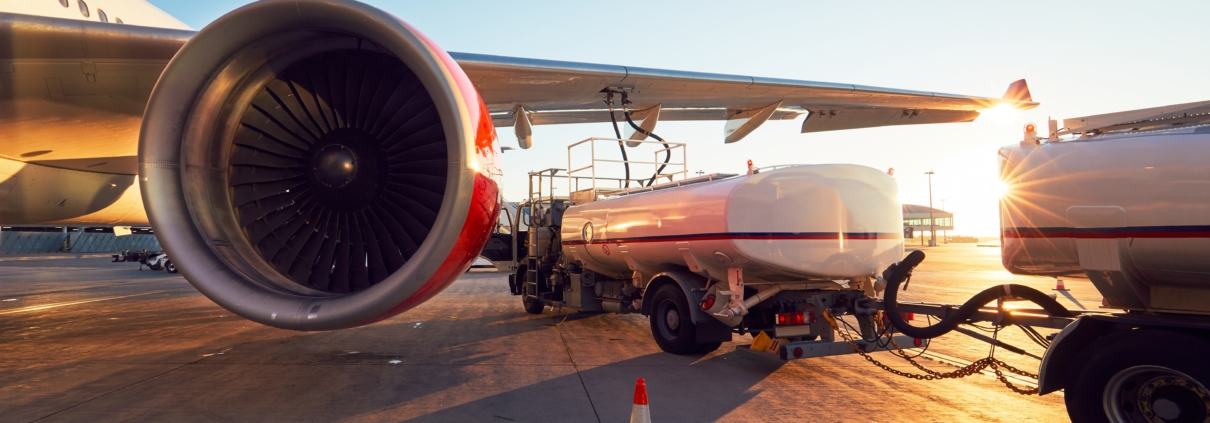What are Sustainable Aviation Fuel Programs?
Commercial air travel accounts for 3-4% of total U.S. greenhouse gas emissions. As such, airlines are beginning to acknowledge this impact on the environment, and many are taking steps to reduce their carbon emissions by switching from traditional fossil-derived jet fuels, to fuels made from renewable sources that produce lower emissions. We’ve outlined the basics of what Sustainable Aviation Fuel (SAF) is, and how airlines are partnering with corporations to purchase SAF and enhance their offset and carbon footprint programs.
What is SAF?
SAF is a biofuel used to power aircraft that has similar properties to conventional jet fuel but with a smaller carbon footprint. There are currently 3 types of SAF being evaluated for use in aviation:
- HEFA Fuels: These are created by removing oxygen from molecules in unused vegetable oils, waste fats and greases. The fuel is then treated with hydrogen to yield burnable hydrocarbons. This fuel type is the most cost competitive SAF technology, and it has the lowest lifetime Greenhouse Gas (GHG) production.
- Fischer-Tropsch SPK Fuel: These are created by oxidizing a variety of plant and human wastes and residues to make synthesis gas, a mixture of H2 and Carbon monoxide. Adding a catalyst (usually iron, cobalt or ruthenium) triggers synthesis producing hydrocarbons. No fuel companies currently produce this fuel type.
- Alcohol to Jet SPK: These fuels are developed from crops such as sugarcane and corn, plant and agriculture wastes. These are converted to ethanol or isobutyl alcohol and then upgraded to kerosene by removing water, and treating it with hydrogen.
How is SAF better for the environment than traditional fuel?
SAF’s lower carbon intensity makes it an important solution for reducing aviation greenhouse gas emissions. Depending on the materials and technologies used to produce it, SAF can reduce life cycle emissions dramatically compared to conventional jet fuel. Some emerging SAF pathways even have a net-negative GHG footprint.
Why are SAFs not already used at a large scale within the aviation industry?
In 2019, less than 200,000 tons of SAF were produced. This is in relation to the 300 million tons of jet fuel used by commercial airlines. As of mid 2021, less than 0.1% of airline flights have been using SAFs.
The challenges of scalability are largely due to the technology advancements that need to mature and the ramping up of production. Given the challenges of production, SAFs are meant to be just one opportunity for reducing emissions as in order to completely replace jet fuel, engines will have to also be reconfigured or replaced. Today’s aircrafts were designed to run on traditional jet fuel, and it is estimated that these engines will support a 50% blend of SAF and Jet fuel.
What SAF programs and other initiatives do airlines have in place to go beyond offsetting and replace their carbon footprint?
Each of the major US carriers have made significant commitments to reduce their carbon emissions and invest in SAF. United, Delta and Southwest Airlines have each put in place programs that expand their investment to allow their corporate customers to partner in a purchasing model to offset and replace their company’s carbon footprint.
In addition to SAF, airlines are investigating opportunities to reduce the overall weight of their aircraft including replacing the aluminum alloy with composite materials which can reduce the weight of the aircraft by 20%, as well as immersion techniques as part of the replacement of chrome based coatings.




Leave a Reply
Want to join the discussion?Feel free to contribute!